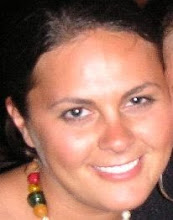I love using iMovie. Creating visual poems, stories, or montages is so fun and rewarding. There is such a sense of ownership one gets from getting to use images and music that matters to them in their work. The result is something so personal and so much more than just black letters on plain white paper.
Our world is visual. It is so important that students learn how to navigate the visual world as much as the literary one. It isn't fair to have students simply put words on paper and ignore all the senses. It is with our eyes and our ears that we internalize so much of what goes on around us. And when we can create things with our own hands that we can see and hear, there is a deep sense of personal satisfaction. Working with images and music is like playing, and playing is how we learn about the world.
I did a podcast about Rilke's poem, "Entrance," and decided to continue working with it for this project, as well. I will be teaching a unit on poetry in January and I wanted to explore various ways I might have my students engage with poetry. I want them to analyze the poems of others and write their own poetry. Teaching high schoolers how to write poetry is a very difficult task. If the goal is to get students to learn about and appreciate poetry and be lifelong lovers of poetry, it is important that they feel connected to it. It is not enough to just tell students to write a poem. So many would become paralyzed by confusion or fear. Having students write poems as a response to other poems, or have them write poems based on or inspired by other poems is a good way to start. Before I wrote the words to this poem, I searched for images that reminded me of Rilke's poem. I searched picture databases on Google and Flickr in order to find pictures that I could use. Then, I inserted them into the iMovie. After I had the pictures lined up the way I wanted them, added the music, transitions, and played around with the Ken Burns effects, I began to write my poem based on the pictures I had found. As I wrote, I found I needed to go back and find some other pictures or delete pictures I had already inserted. So, it was just as much about getting the pictures to match the poem as it was getting the poem to match the pictures. I was really surprised by how easily this poem came to me. I was so inspired and motivated by the images and from the ideas I had already gotten from Rilke's poem, that it was almost effortless. And I don't feel like I simply reiterated what Rilke said in his poem. I took an idea that his poem planted in my mind, expanded on it, and let it unfold and develop naturally. In the end, I feel like I have a very orginal poem that no one would know came from Rilke.
I definitely plan on using a form of this activity with my students next quarter. These two forms of technology have provided me with new ways that I am going to inspire my students to analyze existing poems and create their own.
Subscribe to:
Post Comments (Atom)


No comments:
Post a Comment